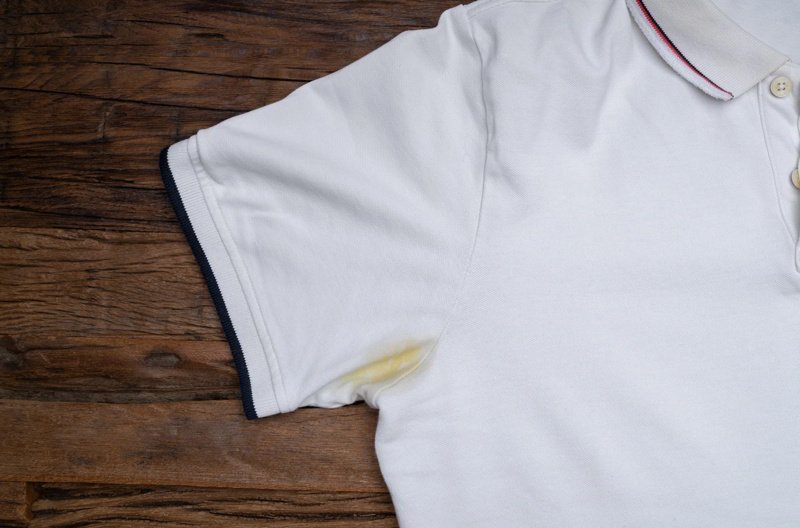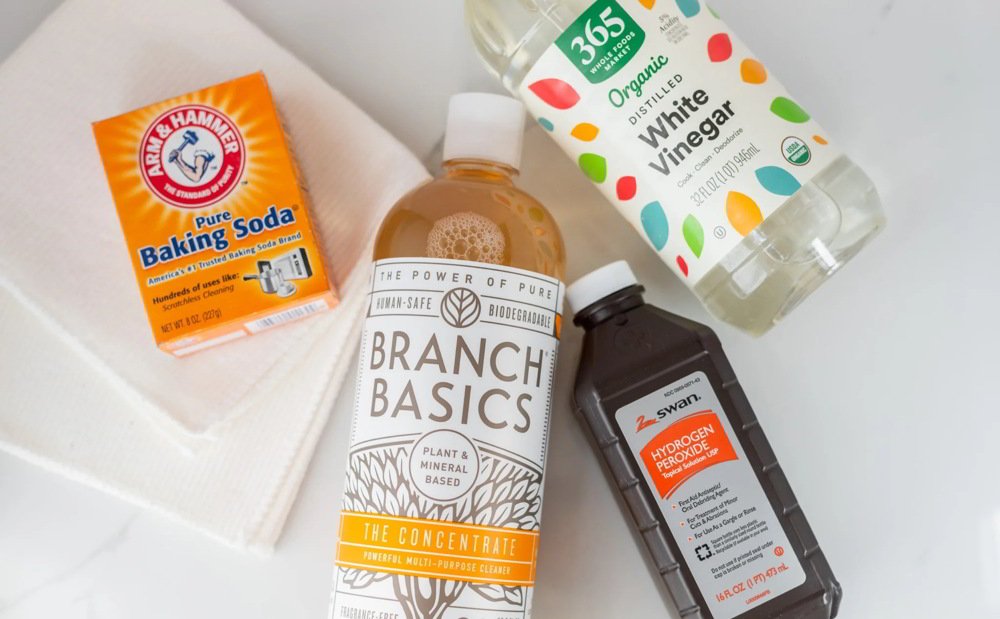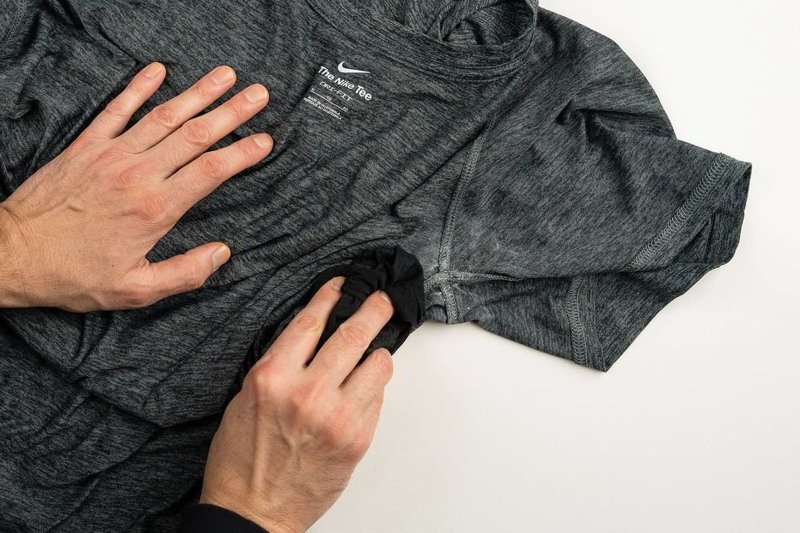Remove Sweat Stains: Expert Guide to Restore Clothes
Stubborn sweat stains are a common frustration, especially for clothing businesses. Damaged stock directly impacts product value and customer perception. Yellow armpit stains can seem impossible to remove, leading to inventory loss. This guide provides expert-backed, practical solutions for tackling these persistent marks.
Discover effective stain removal techniques using common household items, understand why these stains occur, learn crucial laundry best practices to prevent recurrence, and gain insights into proper fabric care to preserve the quality of your garments. The goal is to equip you with the knowledge to restore clothes effectively and maintain stain-free inventory.
1. Understanding why sweat stains happen
While sweat itself is mostly water and salt, the noticeable yellow stains often seen on clothes, especially in the underarm area, result from a more complex interaction. When sweat (containing natural proteins) mixes with sebum (your skin’s natural oil) and skin bacteria, a reaction occurs.
This reaction is often amplified by chemicals found in many deodorants and antiperspirants, particularly aluminum compounds used to reduce perspiration. The combination of sweat proteins, skin oils, bacteria, and these external chemicals binds to fabric fibers, causing fabric discoloration and sometimes leading to stiffness in the affected area. Understanding this chemical reaction is key to effective removal and prevention.

2. Essential supplies for tackling sweat stains
Having the right supplies ensures you’re prepared to treat sweat stains effectively. Most items are readily available household staples.
- Distilled white vinegar
- Baking soda (sodium bicarbonate)
- Water (preferably cool or cold for rinsing)
- Mild liquid laundry detergent
- Oxygen bleach (Note: This is different from chlorine bleach. Never use chlorine bleach on sweat stains, as the chlorine can react with proteins in the sweat, potentially worsening yellowing, especially on whites, and damaging colors.)
- A soft brush (like an old toothbrush)
- A bowl or basin for soaking
- Optional: Clean cloths for dabbing
2.1 Method 1: Pre-soaking with white vinegar
White vinegar is a versatile, natural cleaning solution effective for general sweat stains and associated odors. Its acidic nature helps break down the buildup. This method is generally safe for many fabrics, but always perform a spot test on a hidden area if dealing with delicate or brightly colored garments.
- Mix solution: Combine equal parts distilled white vinegar and cool water in a bowl or sink – enough to fully saturate the stained area.
- Submerge: Place the stained portion of the garment (or the entire item if needed) into the vinegar solution, ensuring the stain is fully submerged.
- Soak: Soak the garment for at least 30 minutes; heavier stains may require a longer soak.
- Rinse: After soaking, thoroughly rinse the garment with cool water. This step is crucial before proceeding to washing or applying other treatments.
2.2 Method 2: Targeted treatment with baking soda paste
For more concentrated or stubborn underarm stains, a baking soda paste offers a targeted cleaning approach. Baking soda acts as a mild abrasive and helps lift residue from fabric fibers.
- Create paste: Mix baking soda with a small amount of water to form a thick paste (consistency similar to toothpaste). Aim for approximately 3 parts baking soda to 1 part water, adjusting as needed.
- Apply: Spread the paste directly onto the sweat stain, covering the entire affected area.
- Let sit: Allow the paste to sit on the stain for at least 20-30 minutes, or longer for set-in stains. The paste will dry slightly.
- Gently scrub: Use a soft brush to gently scrub the paste into the fabric. Use circular motions, taking care not to damage the fibers, especially on delicate materials.
- Rinse thoroughly: Rinse the treated area well with cool water before washing the garment.
Expert tip: For tougher stains, consider combining methods. First, pre-soak using the white vinegar method (Method 1), rinse thoroughly, and then apply the baking soda paste treatment (Method 2) before the final wash.
2.3 Method 3: Using oxygen bleach for stubborn stains
Oxygen bleach is a powerful option for tackling tough, yellow stains, particularly on white, bleach-safe fabrics. Unlike chlorine bleach, oxygen bleach is generally color-safe when used correctly, but caution is essential.
- Check care label and spot test: This is the most critical step. Always check the garment’s care label instructions. Look for symbols indicating whether any bleach or only oxygen bleach is safe (a triangle means any bleach; a triangle with diagonal lines means oxygen bleach only; a solid triangle with an X means no bleach). Always perform a spot test on an inconspicuous area (inside seam, hem) first, following product instructions, to ensure no color loss or damage occurs, even if the label permits oxygen bleach.
- Dissolve bleach: Following the manufacturer’s instructions precisely, dissolve the recommended amount of oxygen bleach powder in the specified amount of water (usually warm or hot water is needed to activate the powder, but use the temperature allowed by the care label for soaking).
- Soak garment: Submerge the stained garment completely in the oxygen bleach solution. Soaking time can range from a few hours to overnight, depending on the severity of the stain and product directions. Check the garment periodically.
- Wash as usual: After soaking, wash the garment according to its care label instructions, using a good quality laundry detergent.
Remember: Oxygen bleach is the preferred choice over chlorine bleach for sweat stains due to potential adverse reactions with chlorine. Reserve this method for durable, bleach-safe items where other methods have failed.

2.4 The final wash and dry protocol
After pre-treating the sweat stains using one or more of the methods above, wash the garment as usual, following the care label instructions. Use cool or cold water, as hot water can sometimes set protein-based stains like sweat. Use a quality laundry detergent.
Crucially, inspect the stained area carefully *before* putting the garment in the dryer. Heat from a dryer will permanently set any remaining stain, making subsequent removal extremely difficult. If any trace of the stain remains, repeat the most appropriate pre-treatment method.
Always opt for air drying the garment initially until you are completely certain the stain is gone. Once confirmed removed, tumble drying on a low heat setting is acceptable if permitted by the care label.
2.5 Treating white vs. colored clothing
The approach to sweat stain removal varies slightly between white and colored garments due to the risk of color damage.
- White clothing: White fabrics, particularly cotton, are generally more resilient. All methods described (vinegar soak, baking soda paste, oxygen bleach) are typically suitable, though spot testing oxygen bleach is still advisable. Chlorine bleach should still be avoided due to potential yellowing reactions with sweat proteins.
- Colored clothing: Extra caution is paramount. Always spot test any treatment solution (vinegar, baking soda paste, or especially oxygen bleach) on an inconspicuous inner seam or hem before applying to the visible stain. Check for any signs of fading or discoloration after the test spot dries. Proceed only if the fabric color remains unaffected. For colored garments, vinegar and baking soda are often the safest starting points. Never use chlorine bleach on colored clothing, as doing so will almost certainly remove color. Different fabric types (e.g., sturdy cotton vs. delicate synthetics like polyester) will have varying tolerances; always default to the gentlest method first and check care labels.
2.6 Dealing with old, set-in sweat stains
Old, set-in sweat stains present a greater challenge because the stain components have deeply bonded with the fabric fibers over time. Success is not guaranteed, but persistence can pay off.
- Extended treatment times: For these stubborn stains, significantly longer soaking times are often required. Consider soaking the garment in a vinegar solution (Method 1) or an oxygen bleach solution (Method 3, if fabric safe) for several hours, or even overnight.
- Multiple applications: One treatment cycle may not be sufficient. You might need to repeat the chosen pre-treatment method (vinegar, baking soda, or oxygen bleach) multiple times, washing the garment between attempts (and always checking before drying).
- Patience is key: Removing old stains requires patience. Do not expect immediate results. Consistent, repeated treatments offer the best chance of improvement.

3. Proactive prevention: Keeping sweat stains at bay
Preventing sweat stains from forming or setting in is often easier than removing them. Incorporating these habits into laundry routines can make a significant difference:
- Wash promptly: Launder sweaty clothes as soon as possible after wearing. Allowing sweat to sit and dry on fabric encourages stains to set.
- Let deodorant dry: Allow deodorant or antiperspirant to dry completely on your skin before dressing. This minimizes direct transfer onto fabric.
- Consider aluminum-free deodorants: Since aluminum compounds are a key contributor to yellow staining, switching to an aluminum-free deodorant might reduce the occurrence of these specific stains.
- Wear undershirts: An undershirt provides a protective barrier between skin/deodorant and outer garments, absorbing most of the sweat.
- Pre-treat susceptible areas: For garments prone to sweat stains (like white work shirts), consider occasionally pre-treating the underarm areas with a vinegar spray or a light baking soda paste application *before* routine washing, even if visible stains aren’t present.
4. Considerations for clothing businesses
For wholesale and retail clothing businesses, effective sweat stain management is vital for maintaining inventory value and ensuring positive customer perception. Stained garments mean lost revenue and can damage brand reputation.
- Inventory value: Implementing consistent stain removal protocols helps salvage stock that might otherwise be discounted or discarded.
- Scalable treatment: For handling multiple garments, adapt the methods. Use large tubs or containers for batch pre-soaking with vinegar. If using baking soda paste frequently, set up an efficient application station.
- Staff training: Ensure that any staff handling garments (receiving, processing, returns) are trained on basic stain identification and the proper, safe removal techniques outlined here. Emphasize the critical “check before drying” rule. Having designated personnel or a clear process for stain treatment maintains consistency.
- Customer perception: Providing clean, stain-free garments is fundamental to customer satisfaction and trust. Proactive care reflects well on the quality standards of the business.

5. Related questions
5.1 How do I remove deodorant buildup (white marks) from clothes?
White, chalky deodorant marks are often residue from the product itself. These usually respond well to gentle rubbing with a dry cloth or nylon stocking. For more stubborn marks, lightly dampen the area and gently scrub with a soft brush or cloth. Washing with a good detergent typically removes fresh buildup. The vinegar or baking soda methods used for sweat stains can also help lift heavier deodorant residue.
5.2 Will these methods remove the sweat smell too?
Yes, both distilled white vinegar and baking soda are excellent natural odor neutralizers. Soaking in a vinegar solution (Method 1) or applying a baking soda paste (Method 2) effectively targets the bacteria responsible for lingering sweat smells alongside the stain itself. Adding a cup of white vinegar to the washing machine’s rinse cycle can also help deodorize garments.
5.3 Can I use these methods on delicate fabrics like silk or wool?
Extreme caution is needed for delicates. Vinegar and baking soda are relatively mild but should always be spot-tested first in an inconspicuous area. Avoid vigorous scrubbing. Oxygen bleach is generally too harsh for silk and wool.
Handwashing with a pH-neutral detergent designed for delicates is often the best approach. For valuable or sensitive delicates with stubborn stains, consulting a professional dry cleaner experienced with such fabrics is the safest recommendation.
5.4 Does water temperature matter for washing after treatment?
Generally, using cool or cold water for the final wash cycle is recommended after pre-treating sweat stains. Hot water can potentially set protein-based stains (like sweat) if any residue remains after treatment. Always follow the garment’s care label instructions regarding maximum safe water temperature, but default to cooler water for washing stained items whenever possible.
Read more:
Mastering sweat stain removal restores garments and protects your inventory. By understanding that stains arise from a reaction involving sweat, skin components, and often deodorant chemicals, you can tackle them effectively. Utilizing simple methods like pre-soaking with white vinegar, applying a targeted baking soda paste, or carefully using oxygen bleach on appropriate fabrics provides a robust toolkit.
Remember the non-negotiable rule: always check for remaining stains before machine drying to avoid setting them permanently. Implementing preventative measures like prompt washing and considering undershirts further safeguards your clothing.
For clothing businesses, maintaining stain-free garments directly translates to preserved value, enhanced customer trust, and overall business confidence. If you’re looking for more resources on fabric care or packaging solutions for your clothing business, you might find Packlove helpful.






















